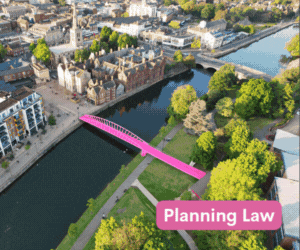Second and third replacement Planning Act guidance issued
 When the Planning Act regime first started, the government issued a series of seven guidance documents to accompany it. A year ago, six replacement drafts were issued for consultation (two being combined) in what was called the 'light touch review'.
When the Planning Act regime first started, the government issued a series of seven guidance documents to accompany it. A year ago, six replacement drafts were issued for consultation (two being combined) in what was called the 'light touch review'.
- Details
Rather more slowly than anticipated, the finalised replacement guidance documents are being issued. One was issued on 10 January - on the pre-application process (see this blog entry for more), and two more were issued late last Friday:
Analysis
Examinations guidance
The examinations guidance has not changed much since the consultation draft, which in turn was not much different from the previous version.
The previous version said that the preliminary meeting should be held around six weeks after the end of the representation period. Given that none of the 20 applications to get that far has actually managed this yet (Heysham was nearest on 44 days), this has been relaxed to 'six weeks to two months' (para 39). There is new text that promoters may request a postponement of the preliminary meeting, but that postponements of more than three months are unlikely to be allowed (44).
The role of Local Impact Reports (LIRs) is clarified as distinct from local authorities making their own representations, which they are also entitled to do (53). The text on LIRs compared with Environmental Statements is strengthened - it used to say there was 'no need' for the LIR to duplicate the ES, now it 'should not' do so (53). The previous guidance referred to a six-week deadline for the LIR from the preliminary meeting, but given that inspectors have tended to set a four-week deadline, this has been removed (54).
An acknowledgement is made that the Development Consent Order will evolve through the examination (89).
A new paragraph has been added allowing the recording of hearings and using social media at them (98). Tweet away!
The guidance on changing applications after they have been made has not changed much. I think it is saying that if the changes make it a 'new project', which seems to be the same as a 'materially different project', then you will probably have to start again. Changes of a lesser degree may need to be publicised if they are to be acceptable, and the examination period may have to be extended (107).
Associated development guidance
The associated development (AD) guidance text has also not changed significantly since the draft, but the examples given have changed a fair amount. The title of the document is probably missing a colon - 'Guidance on associated development applications for major infrastructure projects'.
The text on 'over-specifying' AD to accommodate future development has been redrafted (5(iv)). Criteria are given as to what will be considered if an application includes this: whether the same developer is applying for the other project (without saying whether that is more or less helpful), how close it is and when it is likely to be submitted.
Text on assessing AD and EU environmental requirements has been slimmed down but reference is made to the relevant Planning Inspectorate advice notes on the subject (11). Does this elevate their status?
The text introducing the examples is more qualified than before (12). Examples should not be considered to be AD automatically, and may need consent under the Planning Act in their own right.
The list of examples has changed a fair amount - not just by starting each item with a capital letter. The list has mostly been extended, although some items have been removed, and so the generic and project-specific examples should be checked for a particular project.
Three down, three to go: guidance on compulsory acquisition, the application form and fees is still awaited.
Lawyer - Property
Contracts & Procurement Lawyer
Trust Solicitor (Employment & Contract Law)
Senior Lawyer - Contracts & Commercial
Locums
Poll









































